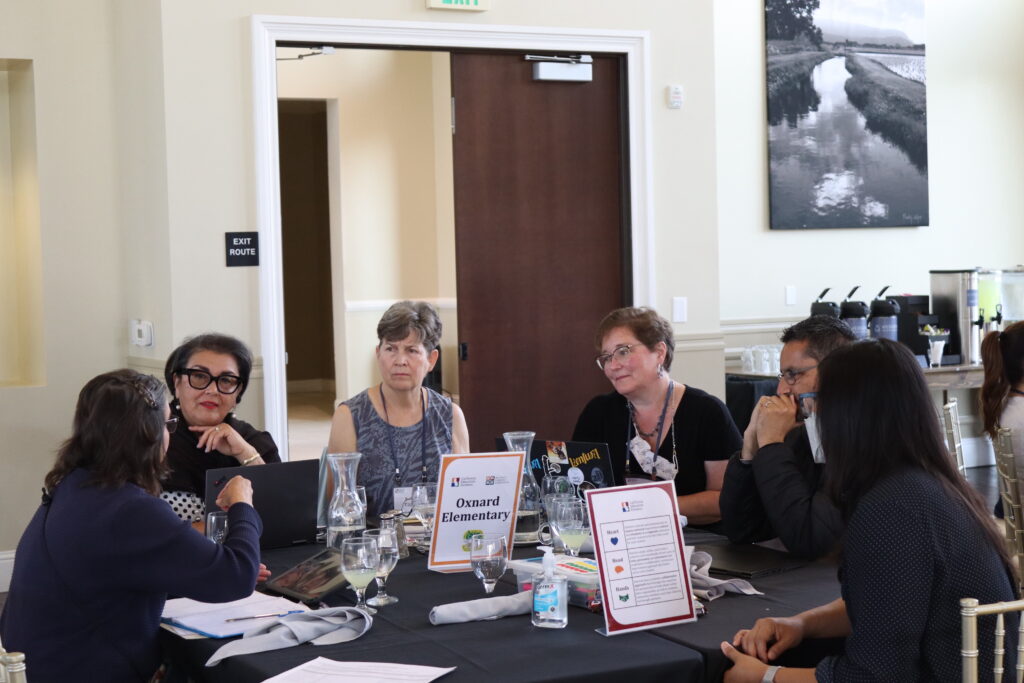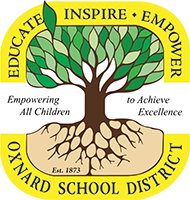

When third-grade teacher Katherine Leppaluto observes her students in class at Emilie Ritchen Elementary School in Oxnard, she knows she’s witnessing the results of other teachers’ efforts. Her intentional collaboration with teachers in prior grade levels ensures she’s building on the foundation they created and continuing progress for each of her students – creating a coherent learning experience.
For example, Leppaluto often pairs her students up to practice their reading lessons. Working in groups of two is a familiar learning approach for her students–whose teachers have been integrating the practice into their classrooms since pre-K–and one that has evolved each year to match their social, emotional and academic development.
From working in pairs to counting collections, Leppaluto and her colleagues are using common learning approaches and practices to build coherence and continuous learning from year to year. Ritchen’s early elementary teachers are equipped to offer personalized support to each of their students and teach with a shared framework because of Oxnard’s district-wide commitment to connecting the dots between each year from pre-K through third grade.
“Teachers can reference past lessons with the confidence that they’re naming something students learned in an earlier grade,” Leppaluto said.
Oxnard School District is working to ensure those early learning years count. Superintendent Dr. Karling Aguilera-Fort was excited for his team to begin working with California Education Partners in March 2020 in the Preschool to 3rd Grade Coherence Collaboration focused on coherence and early learning. “We were eager to provide our team a chance to connect with others from across the state and have access to experts in the field.”
Research shows that ensuring each grade’s lessons and learning lay the groundwork for the next grade in the early elementary years makes all the difference in students’ growth and development, both academically and emotionally. In Oxnard, engaging teachers in adult collaborative learning is a critical factor in achieving that cohesiveness.
With support from their Ed Partners program manager, Oxnard has created a strong system of building blocks, with each school year building on the previous one. The district takes foundational approaches such as hands-on learning, student collaboration and counting collections, adapts them to be developmentally appropriate from grade to grade, and offers shared terms and concepts for teachers to put into practice so students maintain a level of familiarity that keeps their learning on track. And to help ensure consistency at the outset of student learning, the district includes preschool insights in their district-wide data, so they can track outcomes from the beginning.
This process enabled Oxnard to unlock an important lesson about student success: teachers talking to each other across grades makes all the difference. Last year, preschool teachers were fully integrated into the district’s summer professional development program. Sessions were structured to connect multiple grade levels to support teachers and build relationships with each other through cross-grade conversations about approaches to learning and grade level content.
“Our students experience the school system linearly, progressing from one grade to the next; our teachers need to be really tapped into this experience so they can teach with a deep understanding and empathy for the student perspective,” said Noemi Valdes, director of early childhood education at Oxnard.
Guided by California Education Partners’ Coherence Roadmap, Oxnard fostered professional connections across grades and facilitated conversations between teachers who taught their incoming students. This approach helps Oxnard’s early elementary teachers understand each student’s unique strengths and needs, making the classroom experience that much more nurturing and empowering for students. “If you have a question about the needs of one of your students, you can go to their previous teacher and ask them for information. This process can turn a stressful situation into an opportunity for understanding and successful adaptation for a teacher,” Leppaluto said.
Integrating Oxnard’s new TK program into the adult collaborative learning approach meant starting with professional development. To build a roster of well-prepared TK staff, the district worked with existing preschool staff, coaching them to teach in the new full-day program and equipping them with a shared language to ensure students experienced a consistent program across classrooms. At the same time, the district took the opportunity to learn from these early childhood educators, taking steps to center educators’ voices and perspectives in the pursuit of system-wide improvements.
The Preschool to 3rd Grade Coherence Collaboration has strengthened Oxnard’s early learning program, and now the district is ready to expand its impact by offering transitional kindergarten to all four-year-olds for the incoming school year. Starting early makes grade-to-grade coherence that much more important, but the team at Oxnard feels equipped to make it count.
“Throughout the district, administrators, teachers and families are eager to work together to make those early years count for our students, and we do it by respecting our teachers at every level, providing tailored and developmentally-specific instruction to our students and engaging families as active participants,” said Valdes.